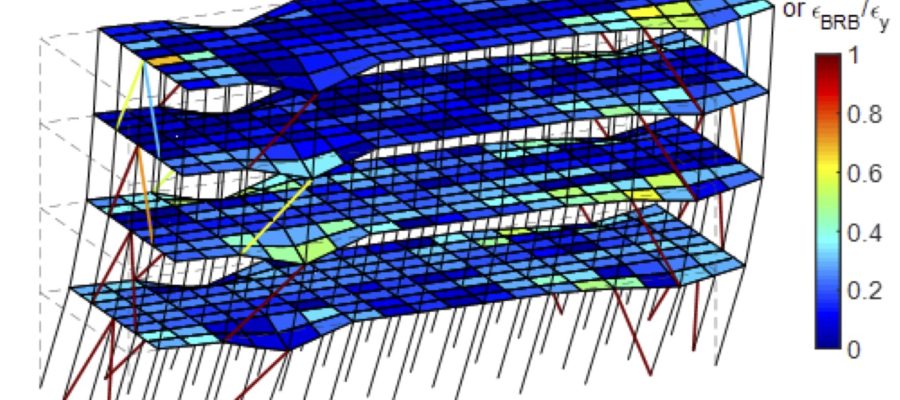SDII researchers, led by Gengrui Wei and Matt Eatherton at Virginia Tech today released a report on the three-dimensional seismic performance of steel framed buildings with Buckling Restrained Braces (BRBs) for the vertical lateral force resisting system. The models include the potential for nonlinear response in both the vertical frames as well as the horizontal steel deck (concrete-filled for the floors, bare for the roof) diaphragms. The study covers the SDII archetype building at heights of 1, 4, 8, and 12 stories. A unique feature of the buildings is that the floor diaphragms are designed and modeled using both traditional diaphragm design as well as variants of the alternative diaphragm design procedure (i.e. the Rs method) that was first adopted in ASCE7-16. The results indicate that an Rs of 2 for concrete-filled steel deck and 2.5 for bare steel deck is satisfactory; however, the general three-dimensional response opens new questions that previous two-dimensional BRB building models do not address. The full report is available at the DSpace collection hosted by CFSRC.
